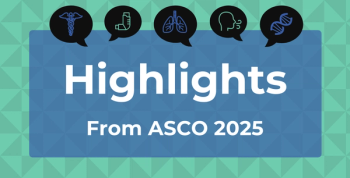
Inside the Discovery That Changed CML Treatment Forever: Jorge Cortes, MD
Lead CML researcher discusses the evolution of a groundbreaking treatment and its effect on patient survival.
When imatinib (Gleevec; Novartis), the first-ever tyrosine kinase inhibitor, made its debut in chronic myelogenous leukemia (CML), it revolutionized the treatment of a disease with a once-dismal prognosis.1
Prior to its 2001 approval, CML therapies were often harsh, invasive, and ineffective.1 Now, 25 years later, current studies continue to align with previous research associating imatinib with major cytogenic responses,2 and targeted therapies have become cornerstones of treatment in a range of tumor types.3
Imatinib was first used to treat patients during a clinical trial in 1998. Lead researchers in the earliest studies were Brian J. Druker, MD; Stephen G. O’Brien, MD; Jorge Cortes, MD; and Jerald Radich, MD. The American Journal of Managed Care® had the pleasure of speaking with Cortes, discussing the history and evolution of imatinib in the CML treatment paradigm.
Patients with CML, unlike patients with acute lymphoblastic leukemia, are likely to have a longer life expectancy with and without treatment. Those with CML can still have a life expectancy of 3 to 5 years after diagnosis without treatment, but with treatment, their life expectancy is closer to the national average.4
“I still remember Dr. Talpaz coming out of rooms and saying, ‘Wow, this thing works.’ He had this expression of wonder at the big change that it was representing... When the new study started...patients came to the study, but they wanted to get imatinib,” Cortes said.
Development of imatinib began in the early 1990s under Druker at Oregon Health and Science University.1 Druker aimed to find a treatment for CML, and with the help of Nicholas Lyndon, MD, they identified a drug that was able to kill CML cells efficiently.1
The phase 1 clinical trial of imatinib in 1998 was partially funded by the National Cancer Institute. The drug was then FDA-approved in 2001 to treat patients with CML. Of the patients in the original trial, 5 years later, 98% of them were still in remission.
“[But] we're not done [yet]. Patients are still looking for a better quality of life, for being able to stop therapy and all of that. We've made tremendous progress, and… we want to be optimistic, but we want to still always be careful and cautious and respect what cancer can do,” Cortes said.
Listen above or on one of these podcast services:
References
1. How Gleevec transformed leukemia treatment. National Cancer Institute. April 11, 2018. Accessed November 10, 2025.
2. Druker BJ, O’Brien SG, Cortes J, Radich J; Chronic myelogenous leukemia. Hematology Am Soc Hematol Educ Program. 2002 (1):111–135. doi:10.1182/asheducation-2002.1.111
3. Chronic myeloid leukemia (CML) research. Blood Cancer United. Accessed November 10, 2025.
4. Targeted therapy for cancer. National Cancer Institute. Updated May 31, 2022. Accessed November 11, 2025.
5. Faiman B. The impact of federal funding cuts on research, practice, and patient care. J Adv Pract Oncol. 2025;16(4):124-125. doi:10.6004/jadpro.2025.16.4.1
Newsletter
Stay ahead of policy, cost, and value—subscribe to AJMC for expert insights at the intersection of clinical care and health economics.







































